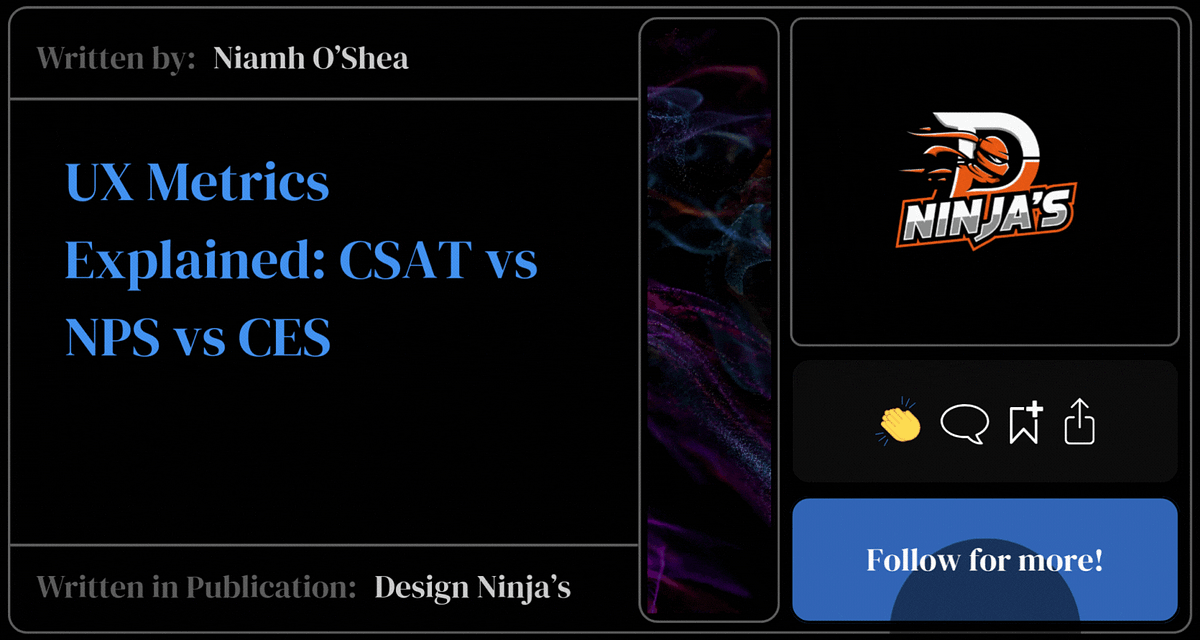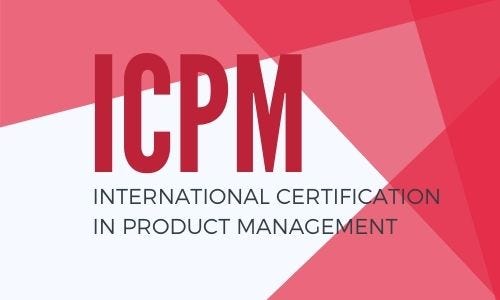Product Management News
Fourweekmba
282

Image Credit: Fourweekmba
The Strategic Power of “Dogfooding”
- Dogfooding, or 'eating your own dog food,' is the practice of using your product in your daily operations, originating from a Microsoft practice in the 1980s.
- Dogfooding is a systematic approach to product development where you become your own first customer to discover and validate market needs from the inside out.
- The core principle of dogfooding is that if you solve a problem you genuinely have, you're more likely to solve a problem others have too, aiding in achieving product-market fit.
- Dogfooding is critical for startups and product teams in the pursuit of product-market fit, shifting focus from building products for theoretical users to solving problems they intimately understand.
Read Full Article
16 Likes
Medium
132

Image Credit: Medium
When Systems Fail Silently: A Small Miss, a Big Customer Gap
- The writer experienced a delay in receiving a pair of glasses from Lenskart without any updates on the delivery status for ten days.
- Upon contacting customer care, the writer discovered that the glasses had actually been delivered three days after the order, but the system failed to update the information in the app.
- The article discusses how the failure was due to a gap in synchronization between internal systems and customer-facing apps in companies like Lenskart, highlighting the importance of transparent communication with customers.
- The writer reflects on the incident as a reminder of the critical role of timely and accurate communication in maintaining customer trust, suggesting potential improvements to prevent similar lapses in the future.
Read Full Article
7 Likes
Medium
305

Image Credit: Medium
When Automation Isn’t Worth It — and Why That’s Totally OK
- The author built a cloud-based automation system on Replit but faced limitations due to the platform not allowing 'sudo' for installing Playwright's browser dependencies.
- The author then moved development to GitHub Codespaces to complete the process, which technically worked well, but encountered issues with a login modal that didn't cooperate.
- Multiple manual workarounds were needed in the automation process, making it fragile. This led the author to realize that the automation wasn't worth it for the problem at hand.
- The author learned the importance of scoping down projects, evaluating effort versus value, and understanding that quitting isn't failure but good product thinking, highlighting that it's okay to stop if something is no longer efficient.
Read Full Article
14 Likes
Medium
64

Image Credit: Medium
UX Metrics Explained: CSAT vs NPS vs CES
- Key UX metrics such as CSAT, NPS, and CES provide insights into user sentiment in the digital battlefield.
- CSAT, NPS, and CES offer different perspectives to measure user experience and require proper interpretation for impactful insights.
- CSAT focuses on immediate user satisfaction with a specific interaction, product, or service through a direct question.
- The article is informative about UX metrics but does not meet the criteria for web story generation as it lacks specific details or examples.
Read Full Article
3 Likes
Discover more
- Programming News
- Software News
- Web Design
- Devops News
- Open Source News
- Databases
- Cloud News
- Operating Systems News
- Agile Methodology News
- Computer Engineering
- Startup News
- Cryptocurrency News
- Technology News
- Blockchain News
- Data Science News
- AR News
- Apple News
- Cyber Security News
- Leadership News
- Gaming News
- Automobiles News
Medium
323

Image Credit: Medium
What is an International Product Management Certification and Why Does It Matters?
- An International Product Management Certification is a structured learning program that equips professionals with tools and skills to manage products across different markets and industries.
- Getting certified demonstrates a commitment to understanding product management, opens up new career opportunities, helps professionals stay current with industry trends, and gives a hiring edge by showcasing practical knowledge.
- Certification programs provide relevant skills that can be immediately applied in jobs and interviews, offering a pathway for career transitions or advancement in product-related roles.
- The real value of certification lies in reshaping problem-solving approaches, networking with peers, gaining confidence for challenging roles, and acquiring skills that are practical and immediately actionable.
Read Full Article
19 Likes
Medium
212

Good Candidates Use AI. Lazy Interviewers Call It Cheating.
- Some companies are penalizing candidates for using AI during interviews, viewing it as cheating instead of a relevant skill.
- Top talent is leveraging AI to enhance their speed and efficiency in the workplace.
- Great interviewers engage candidates who use AI, challenge them, and evaluate their depth of understanding rather than focusing on surface-level skills.
- The key is to test real-world performance and judgment rather than trying to detect AI usage in the interview process.
Read Full Article
11 Likes
Logrocket
68

Image Credit: Logrocket
Leader Spotlight: Scaling an ecommerce business within a broader organization, with Michal Ochnicki
- Michal Ochnicki, Ecommerce Director at SteelSeries, shares strategies for boosting ecommerce within organizations.
- He emphasizes clear communication and introducing innovative services while maintaining harmony with existing operations.
- Ochnicki highlights the importance of frequent, transparent communication and involving all stakeholders for success.
- He discusses balancing global and regional initiatives, maintaining brand consistency, and optimizing user experience.
- Ochnicki's top tips include planning with expectations, constant evaluation, and effective communication across markets.
Read Full Article
4 Likes
Medium
197

How I See Product Through Human Eyes
- Product work is not just about features or metrics, but also about creating a human connection through design.
- Attention to small details like language clarity and smoother user experience can significantly impact how users interact with a product.
- Data-driven decisions are important, but understanding user feelings and experiences is equally crucial for successful product design.
- Trusting intuition and empathy in product design can lead to more human-centered experiences that prioritize user understanding and comfort.
Read Full Article
11 Likes
Medium
373

How to Actually Land a Tech Job in 2025: Smarter Applications, Stronger Interviews, Better…
- In the tech industry, there is fierce competition for product management roles, with only 1 job available for every 37 candidates.
- Job seekers are advised to apply only if they meet at least 80% of the job requirements and focus on roles posted within the last 24 hours to 1 week to increase their chances of success.
- Employers often post job listings they have no intention of filling, so candidates need to be cautious.
- Applicants are encouraged to use tools for application optimization, leverage networking for job opportunities, and personalize their approach rather than relying on generic AI tools for cover letters.
Read Full Article
20 Likes
Medium
211

Image Credit: Medium
PM in Progress: Strategies to Make MyFitnessPal a Habit That You Can Enjoy
- Strategies from Duolingo can help MyFitnessPal become a habit users enjoy.
- Using engaging visuals, emotional feedback, gamification, and making tracking fun are key.
- Building emotional connection, providing celebrations, and narrative hooks can improve engagement.
- Designing for behavior change is crucial; testing small features can lead to insights.
Read Full Article
12 Likes
Medium
247
Image Credit: Medium
Outcome-Based Roadmap
- An integration aimed at improving data integrity fell short due to an API constraint, requiring users to re-enter key fields and manually join records, offsetting efficiency gains.
- Outcome-based thinking emphasizes changes in user behavior that yield business results, focusing on observable and measurable outcomes that bridge development efforts with business objectives.
- Teams should prioritize outcomes over tasks completed to ensure projects deliver value, with a focus on user behavior changes that drive measurable impact and align with business goals.
- A 5-step approach to an outcome-based roadmap includes defining business results, identifying enabling user behaviors, mapping behavior changes into measurable outcomes, validating impact, defining enabling outputs, and measuring progress for iterative improvements.
Read Full Article
14 Likes
Medium
43

Image Credit: Medium
The Wright Brothers- Lessons in Building Great Products from 1903
- The Wright brothers succeeded in building the first airplane through product thinking.
- They focused on user experience, iterative testing, intellectual curiosity, hands-on learning, and perseverance.
- By embracing constraints and complementing skills, they achieved groundbreaking innovation in aviation.
- Lessons from their approach include obsession with the problem, experimentation, and perseverance.
- Their unconventional methods led to the creation of the first practical, controllable aircraft.
Read Full Article
2 Likes
Medium
358

When Delivery Apps Get Stuck at the Gate — A Small Problem with a Simple Fix
- A delivery partner faced difficulties marking an order as delivered as he wasn't at the exact pinned location, causing inconvenience to both the partner and the customer.
- The incident highlights a gap in product thinking around edge cases where the system assumes every delivery ends at the exact location, neglecting real-world complexities like security rules, building restrictions, or weather conditions.
- A lightweight solution is proposed to address this issue without resorting to GPS hacks or tedious customer support calls, allowing for smoother order completion and faster movement to the next delivery.
- This situation underscores the importance of considering edge cases in product design to enhance trust and user experience, emphasizing that removing friction can be more impactful than focusing solely on optimizing the 'happy path.'
Read Full Article
21 Likes
Medium
331
Image Credit: Medium
The Data-Driven Playbook for Feature Prioritization: How to Make Go/No-Go Decisions That Align…
- In product development, it's crucial to make data-driven decisions to prioritize features effectively.
- Balancing user needs, business strategy, technical constraints, and market dynamics is essential in feature prioritization.
- Not every suggested feature should be built, and sometimes the most powerful decision is deciding not to build a feature.
- Prioritizing features requires discipline, clarity, and strategic restraint to deliver value and differentiate between urgent and important tasks.
Read Full Article
19 Likes
Medium
189

The Anatomy of Product Management: Strategy, Design, and Execution
- Product strategy accounts for 10% of a PM's time but sets the direction for the rest.
- Product design, occupying 40% of a PM's focus, is crucial for turning hypotheses into usable experiences.
- Craft & execution, comprising 50% of a PM's attention, brings strategy and design to life.
- Senior PMs can use strategic thought exercises, design challenges, and tactical scenarios to sharpen their skills.
Read Full Article
11 Likes
For uninterrupted reading, download the app